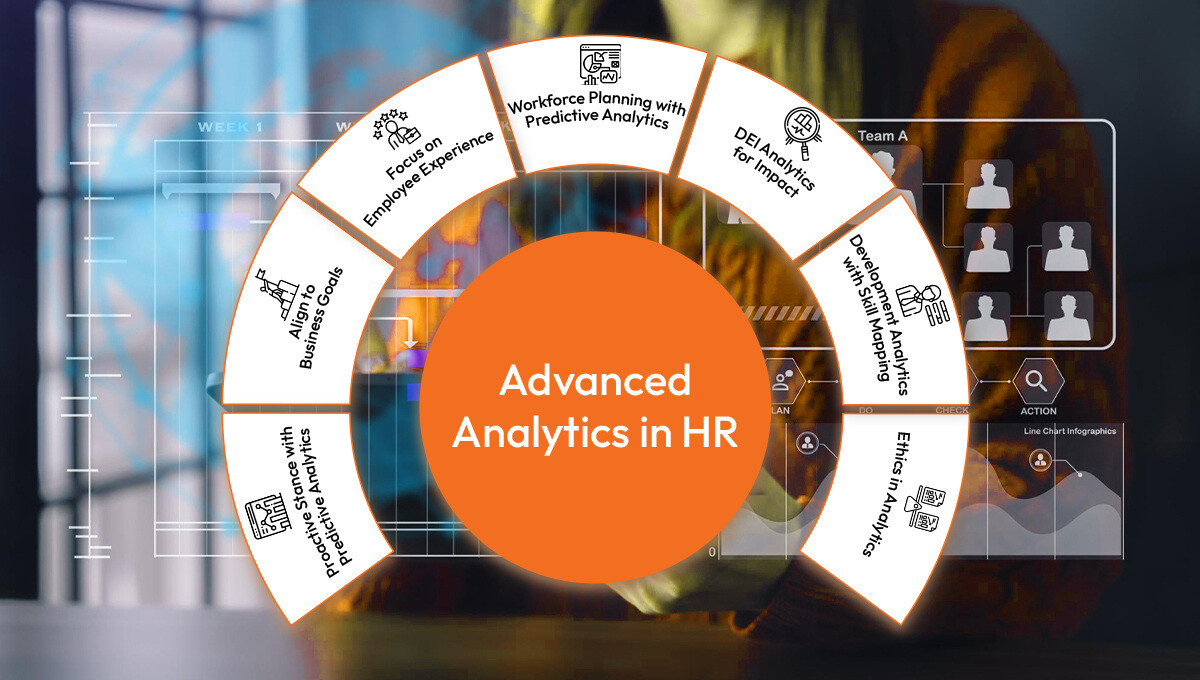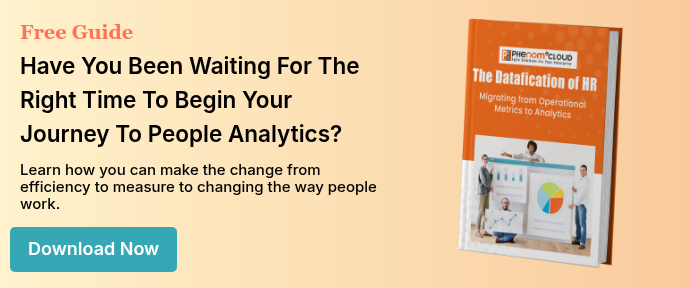
Many companies struggle with talent shortages and high turnover rates caused by changing market trends, rising employee expectations, and advanced AI technology. On the bright side, there's a silver lining. CHROs are more motivated than ever to find efficiencies in decision-making processes, improving company culture and talent retention. Advanced analytics is key to Improvement, offering hiring insights, enhancing employee engagement, and predicting turnover rates.
Integrating advanced analytics tools and trends is an urgent necessity for HR decision-making. It's crucial for creating an effective hiring process that upholds high morale and keeps costs low. Staying abreast of technology and industry trends is essential in today's volatile business environment.
Let's explore how advanced analytics transform HR practices and why HR leaders need to act now.
The High Cost of Employee Turnover
Finding individuals for critical roles has become challenging as talent shortages impact various industries. The scarcity of talent prolongs the hiring process and intensifies competition among businesses. Implementing efficient hiring practices is imperative to finding top-tier candidates ahead of competitors.
High turnover rates come with a hefty price tag. A robust screening process, powered by predictive analytics and behavioral assessments, can identify the most suitable candidates, reduce the loss of high-potential people, and prevent hiring mistakes. You can reduce these risks by making more informed hiring decisions.
How To Use Advanced Analytics in HR
How can you create a more stable and efficient workforce? Absolutely! Advanced analytics can help you . Despite this, there are challenges and potential downsides to using technology to improve your workplace environment. The most important thing? Your process cannot overlook prizing the human element.
Implement these seven key considerations when incorporating advanced analytics in HR practices.
1. Transition to a Future Orientation
Avoid the pitfall of reactive thinking. Encourage a future-focused mindset that enables your employees to anticipate and embrace change with flexibility.
Prepare for challenges and take preemptive measures. Issues in filling roles can leave you susceptible to talent shortages, which can demoralize a team.
Anticipating and mitigating potential issues is possible for HR leaders through pattern recognition and predictive analysis. By leveraging data analytics and machine learning algorithms, you can identify patterns and trends, such as turnover patterns, performance indicators, and employee satisfaction levels. This approach empowers you to expect HR challenges, such as talent shortages or retention issues, and to develop targeted strategies to address them.
Predictive analysis lets you forecast workforce needs and make data-driven recruitment, training, and talent management decisions.
2. Align with Organizational Goals
How do you know if your HR processes are effective? Key Performance indicators (KPIs), Objectives and Key Results (OKRs), and similar metrics measure contributions to success at every organizational level. They provide measures to assess the effectiveness of HR initiatives and strategies.
Establishing metrics related to talent acquisition, employee engagement, retention, and productivity enables you to track HR's performance. Use them to identify areas for improvement and show the value of HR efforts to key stakeholders. With advanced analytics, it's essential not to lose sight of how automation and artificial intelligence impact your outcomes.
3. Focus on the Employee Experience
When you create a hiring process that builds culture, trust, and satisfaction for the talent you want to attract, you can harness data to shape your strategies for retaining and empowering employees.
Use advanced analytics to examine the employee lifecycle, from recruitment to offboarding, fostering enhanced employee satisfaction and engagement. By leveraging advanced analytics tools, HR professionals can gain valuable insights into recruitment processes, such as identifying the most effective sourcing channels and predicting candidate success based on historical data.
Throughout the employee journey, analytics can monitor key indicators of satisfaction and engagement, such as performance metrics, feedback, and sentiment analysis. These indicators enable interventions to address potential issues and optimize the employee experience. Advanced analytics can also facilitate personalized development plans, succession planning, and targeted retention strategies.
4. Workforce Planning with Predictive Analytics
Predictive analysis enables HR professionals to forecast employee turnover, performance, and workforce demand by leveraging historical data and sophisticated algorithms. You can identify and address potential talent shortages, optimize recruitment strategies, and develop targeted retention initiatives.
Predictive analysis facilitates identifying high-potential employees and enables personalized development plans, fostering a culture of continuous improvement. However, you need to address challenges such as data quality, privacy concerns, and the need for specialized skills to interpret and act on predictive insights. Using predictive analytics for workforce planning can help you gain a competitive edge in talent management and workforce planning.
5. Measure Impact with DEI Analytics
Workplace demographics are crucial to creating a workplace that supports all workers and gives your brand a multi-faceted voice. Without deliberate diversity, equity, and inclusion (DEI) initiatives, you risk hiring a homogenous workforce.
According to the Pew Research Center,
- Only 30% of employees say their workplace offers salary transparency.
- 26% have affinity or employee resource groups based on a shared identity.
- A 61% majority believe their organization supports fairness in hiring, pay, or promotions.
- 52% say there are DEI training or meetings at their workplace. Employees who have access to these measures note they affect the company culture.
Too often, we use only subjective diversity and inclusion measures. Still, you can quantify the effectiveness of your DEI efforts by tracking representation across demographics, pay equity, and inclusion survey results. By analyzing this data, you can identify areas for improvement, measure progress over time, and ensure accountability in fostering a fairer and more inclusive workplace.
6. Use Skills Mapping and Development Analytics
Identifying and assessing the skills and competencies in your workforce enable informed talent development decisions, succession planning, and resource allocation. By mapping skills across the workforce, you can identify skill gaps and align learning and development initiatives with strategic goals to prepare your workforce for future challenges.
Seventy-four percent of employees feel a lack of professional development hinders their upward mobility, while 94% say they would stay longer if it provided opportunities for relevant skill development.
The intersection of data and learning and development strategies allows organizations to leverage insights from employee performance data, skills assessments, and emerging industry trends to design targeted training programs that address growing skill requirements and enhance employee adaptability. Ensure you align learning and development initiatives with organizational objectives to help your company become agile and competitive.
7. Consider AI Ethical Concerns in HR Analytics
Artificial intelligence in analytics raises ethical concerns regarding privacy, fairness, and potential discrimination—bias surrounding decision-making in HR, such as recruitment, performance evaluation, and promotions.
While AI offers benefits like efficiency gains, improved decision-making, and enhanced insights, it's crucial to mitigate bias by auditing algorithms, ensuring transparency in decision-making, and providing avenues for recourse in case of algorithmic errors or bias. This balanced approach ensures the responsible application of AI technology, promoting fairness, equity, and ethical standards in HR practices.
Advancing Your HR Decision-Making
Advanced analytics are redefining traditional HR practices. Today's HR leaders must shift towards data-driven decision-making strategies, future-forward workforce planning, and rapid rapid talent allocation.
Embracing and adapting to these analytical advancements empowers HR leaders to gain deeper insights into workforce dynamics, optimize HR processes, and drive organizational growth.
Want to learn more?
Reach out. Schedule a call to learn more about how people analytics solutions can benefit your organization. We're here to answer questions and help you navigate the path toward success.
Or, download your free eBook:
PhenomᵉCloud is a comprehensive technology solutions provider committed to empowering businesses to overcome challenges, enhance their workforce capabilities, and achieve superior outcomes.


Leave a Comment